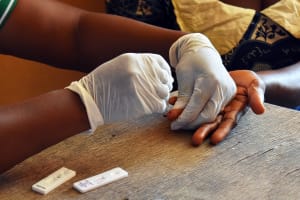Mosaic floor of ancient wine press in Galilee depicts Greek gods
Despite its compact size, the Holy Land is a treasure trove of archaeological discoveries with universal significance

There is an ancient Byzantine-era wine press in the historically-important Galilee region that depicts Greek gods.
The ancient town of Zippori in northern Israel was home to several diverse religious groups during the 4th to 7th centuries, including Jewish, Christian and Pagan communities. The wine press was found positioned in a large water cistern some 200 meters (about 65 feet) outside of the historic town.
Archaeologist Dr. Zvika Tzuk of the Israeli National Parks Authority stressed the importance of the find.
“This wine press was found in the largest of two arched reservoirs in the Zippori National Park, which are part of the impressive water system at the site, including long aqueducts that provided water to the ancient city of Zippori,” Tzuk told The Times of Israel.
Yoel Arbel, who headed the excavation, revealed additional details.
“Inside the buildings and installations, we found many fragments of storage jars and cooking pots that were evidently used by laborers working in the fields here.”
“We also recovered stone mortars and millstones that were used to grind wheat and barley and probably also to crush herbs and medicinal plants."
One of the structures contained a mosaic depicting what seems to be a wine-drinking contest between the Greek gods Dionysus and Heracles.
Despite its compact size, the Holy Land is a treasure trove of archaeological discoveries that hold universal significance. The nation's strategic location at the intersection of Europe, Africa and Asia embodies the cultural diversity of the archaeological sites.
In August 2021, Arbel led an excavation in which another Byzantine-era wine press was found just outside of Tel Aviv, Israel's commercial and technology hub.
“The excavation unearthed evidence of agricultural-industrial activity at the site during the Byzantine period – about 1,500 years ago,” stated Arbel. In addition, a Byzantine-era coin depicting Emperor Heraclius was discovered in the vicinity. The other side of the ancient coin depicted Golgotha, the site of Jesus Christ’s crucifixion.
The Israeli public often contributes to new archaeological discoveries in the Jewish state.
A 17-year-old Israeli high school student recently discovered a piece of a 1,500-year-old “magical mirror” adjacent to the village of Usha in northern Israel. The Israel Antiquities Authority (IAA) believes the ancient remnant to be from the Roman or Byzantine period, somewhere between 1,400 and 1,600 years old.
In July, Israeli archaeologists uncovered a rare 2,000-year-old Jewish silver half-shekel coin from the First Jewish Revolt era. The ancient coin was discovered at the Ein Gedi Nature Reserve close to the Jewish fortress of Masada in the Judean Desert.
Yaniv David Levy, an IAA scholar, stressed the importance of finding such a rare ancient Jewish coin.
“During the Second Temple period, Jewish pilgrims used to pay a Temple tax in half-shekel coins. For about two centuries, Tyrian-minted coins, made of fine silver and a status symbol in the region, were used for this contribution. In the course of the revolt, the rebels minted alternative coins inscribed with 'shekel Israel,' 'half-shekel' and 'quarter-shekel,'” Levy explained.

The All Israel News Staff is a team of journalists in Israel.













